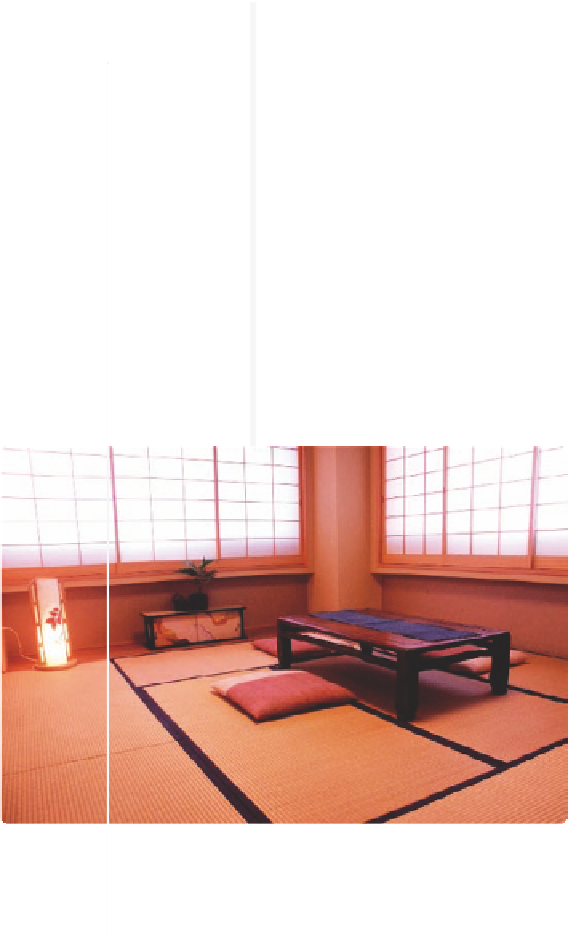Travel Reference
In-Depth Information
GrEEn TokYo
Around five million foreigners and 420 million Japanese visit Tokyo each year, and while few come
for an eco
-getaway, it's perfectly possible to live green for a few days while in the city. As well as
the suggestions below, you can also stay at the eco-friendly J-Hoppers backpackers' (
W
osaka.
j-hoppers.com), tuck into fabulous vegetarian food at The Brown Rice Café (
W
www.brown.co.jp) or
get some second-hand fashion bargains at the Togo Shrine market in Harajuku on Sundays. And
don't forget to buy your own wooden chopsticks: the Japanese get through sixty million pairs of
disposable chopsticks every day.
365 Eat organic at Mominoki House
Mominoki takes its organic principles seriously:
it has its own farm and offers cooking lessons
with the master chef (who is also the owner).
The restaurant's simple, unfussy design makes
it clear that nothing is to get in the way of
appreciating the food, where dishes such as
steamed organic Orara perch, fresh wakame
seaweed and king prawn with sea-urchin cream
sauce are all washed down with the finest
organic sake or shochu.
Need to know
Mominoki is at 2-18-5 Jing
-
mae,
Shibuya-ku; the nearest station is Meiji-jing
-
mae.
Lunch costs around ¥1100 and dinner ¥2800.
For menus and prices see
W
www2.odn.ne.jp/
mominoki_house;
T
+81 (0) 334 059 144.
364 Sleep at Yoshimizu
With no telephones, TVs or refrigerators in the
rooms, Yoshimizu inn is the antithesis of the
ultraconnected city on its doorstep - but then
it is run by a former hippy who used to live at
Woodstock in the 1960s. Right in the middle of
the upmarket Ginza district, the eleven rooms
combine zen simplicity with eco sensibilities,
incorporating mud walls (which absorb moisture
and odour), bamboo flooring and organic
tatami
mats. The traditional cuisine served up in the
restaurant is organic and homely and before you
realize it you'll have forgotten that you're in one
of the world's busiest cities.
A room at Yoshimizu
366 Shop with the original green bag
Several hundred years before the “bag for life”
became fashionable in Europe, the Japanese were
using the
furoshiki
. It's essentially a large square of
material, often made of cotton or silk and beautifully
patterned, which you open out, put your supplies in,
and then tie up using the kind of folding techniques
that seem to come more naturally to the Japanese.
They're having a bit of a renaissance in these eco-
conscious times, and will cause more of a talking
point back home than the latest reusable bag.
Need to know
Most department stores will stock
furoshiki, with simple cotton fabrics selling for as
little as ¥300 and pure silk anything up to ¥7500
or more. Try Matsuya in the Ginza district for
everything from traditional to modern designs.
Need to know
For rates, reservations and info on
getting there see
W
www.yoshimizu.com;
T
+81 (0)
332 484 432.











Search WWH ::

Custom Search